
This three-act math task utilizes videos and questioning to help students explore multiplying and dividing fractions.
- Subject:
- Mathematics
- Material Type:
- Activity/Lab
- Provider:
- GFletchy
- Author:
- Graham Fletcher
- Date Added:
- 10/25/2022

This three-act math task utilizes videos and questioning to help students explore multiplying and dividing fractions.

Create your own shapes using colorful blocks and explore the relationship between perimeter and area. Compare the area and perimeter of two shapes side-by-side. Challenge yourself in the game screen to build shapes or find the area of funky figures. Try to collect lots of stars!
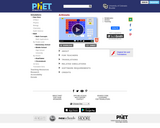
Remember your multiplication tables? ... me neither. Brush up on your multiplication, division, and factoring skills with this exciting game. No calculators allowed! The students will be given mutiplication and division problems which they must answer. They also have the option of being given a number then stating the factors of how that number was attained using either multiplication or division.

This word problem requires students to use fractions to solve it.
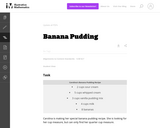
The purpose of this task is to provide students with a concrete situation they can model by dividing a whole number by a unit fraction.
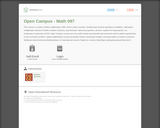
This course is a review of basic mathematics skills. Here's what's covered:
-fundamental numeral operations of addition, subtraction, multiplication
division of whole numbers, fractions, and decimals
-ratio and proportion
-percent
-systems of measurement
-an introduction to geometry
NOTE: Open Campus courses are non-credit reviews and tutorials and cannot be used to satisfy requirements in any curriculum at BPCC. (Basic Mathematics Course by Bossier Parish Community College is licensed under a Creative Commons Attribution-NonCommercial-NoDerivatives 4.0 International License.
Based on a work at http://bpcc.edu/opencampus/index.html.)
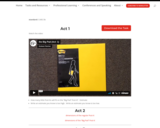
This three-act math task utilizes videos and questioning to help students explore area with unit fractions.
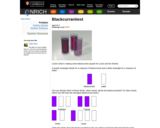
In this problem students explore the concept of proportion by comparing the relative strengths of different mixes of juice flavor and water in a visual context. Given four mixtures represented by purple and white rectangles, students order the drinks from strongest to weakest flavor and explain their reasoning. The Teachers' Notes page offers suggestions for implementation, discussion questions, and ideas for extension and support.

This problem requires a sound understanding of the fraction relationship between part and whole and can be used for finding fractions of numbers and quantities. Students are given the fractional amount of apples in a fruit bowl and the specific number of other fruit in the bowl in order to figure out how many apples are in the bowl. The Teachers' Notes page includes suggestions for implementation, discussion questions, ideas for extension, a link to a worksheet which provides student support, and a downloadable pdf of the puzzle.

Build fractions from shapes and numbers to earn stars in this fractions game or explore in the Fractions Lab. Challenge yourself on any level you like. Try to collect lots of stars!

Build fractions from shapes and numbers to earn stars in this fractions game or explore in the Fractions Lab. Challenge yourself on any level you like. Try to collect lots of stars!
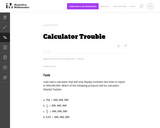
This task requries students to think about division by fractons.

This lesson reviews how to change an improper fraction to a mixed number.

In this activity students develop fraction concepts by reasoning about what choices they would make in order to get the most chocolate. Students determine how much candy they would receive as they enter one at a time and sit at one of three tables holding different amounts of candy which get shared equally. The activity includes the problem, tips for getting started, a teacher resource page, and a printable page of the problem.

In this video segment from Cyberchase, the CyberSquad must locate a crystal with the highest fraction of orange color.
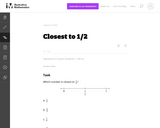
In this task using a number line, students must partition the interval between 0 and 1 into eighths.
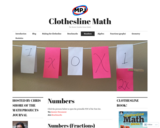
Premade number tents to use clothesline math with fractions, integers, roots and exponents.
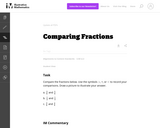
The purpose of this task is for students to compare fractions using common numerators and common denominators and to recognize equivalent fractions.

In this interactive activity adapted from Anneberg Learner’s Teaching Math Grades 3–5, compare fractions on number lines to determine which class of students wins bubble-gum-blowing contests.

This task is meant to address a common error that students make, namely, that they represent fractions with different wholes when they need to compare them. This task is meant to generate classroom discussion related to comparing fractions. Particularly important is that students understand that when you compare fractions, you implicitly always have the same whole.